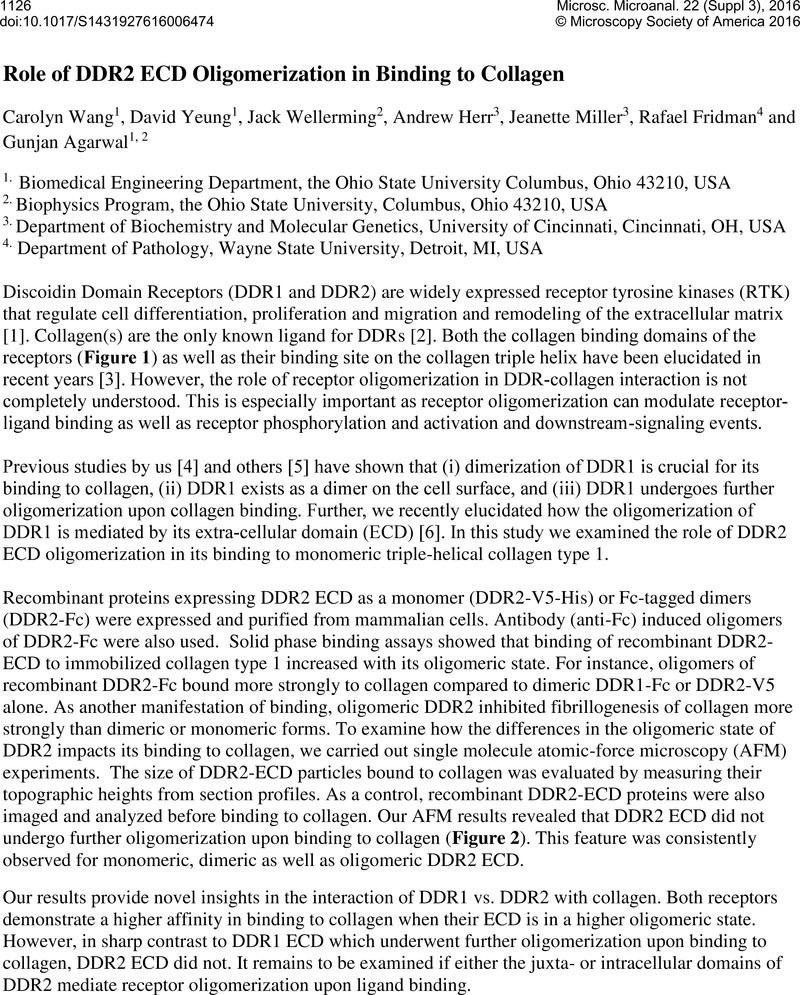No CrossRef data available.
Article contents
Role of DDR2 ECD Oligomerization in Binding to Collagen
Published online by Cambridge University Press: 25 July 2016
Abstract
An abstract is not available for this content so a preview has been provided. As you have access to this content, a full PDF is available via the ‘Save PDF’ action button.

- Type
- Abstract
- Information
- Microscopy and Microanalysis , Volume 22 , Supplement S3: Proceedings of Microscopy & Microanalysis 2016 , July 2016 , pp. 1126 - 1127
- Copyright
- © Microscopy Society of America 2016
References
References:
[1]
Fu, H. L., et al,
Discoidin domain receptors: unique receptor tyrosine kinases in collagen-mediated signaling.
J. Biol. Chem
288
(2013). no. 11, p. 7430–7437.Google Scholar
[2]
Vogel, W, et al,
The Discoidin Domain Receptor Tyrosine Kinases Are Activated by Collagen.
Mol. Cell
1
(1997). no.1, p. 13–23.CrossRefGoogle ScholarPubMed
[3]
Xu, H., et al,
Collagen binding specificity of the discoidin domain receptors: binding sites on collagens II and III and molecular determinants for collagen IV recognition by DDR1.
Matrix Biol
30
(2011). no. 1, p. 16–26.Google Scholar
[4]
Mihai, C.
Mapping of DDR1 Distribution and Oligomerization on the Cell Surface by FRET Micrscopy.
J. Miol. Biol
30
(2009). no. 2, p. 432–435.Google Scholar
[5]
Noordeen, N.A., et al,
A transmembrane leucine zipper is required for activation of the dimeric receptor tyrosine kinase DDR1.
J. Biol. Chem
281
(2006). no. 32, p. 22744–22751.Google Scholar
[6]
Yeung, D., et al,
Oligomerization of DDR1 ECD affects receptor-ligand binding.
J. Struct. Biol
(2013). p. 1–6.Google Scholar
[7] The authors acknowledge funding from NSF CMMI award 1201111.Google Scholar


